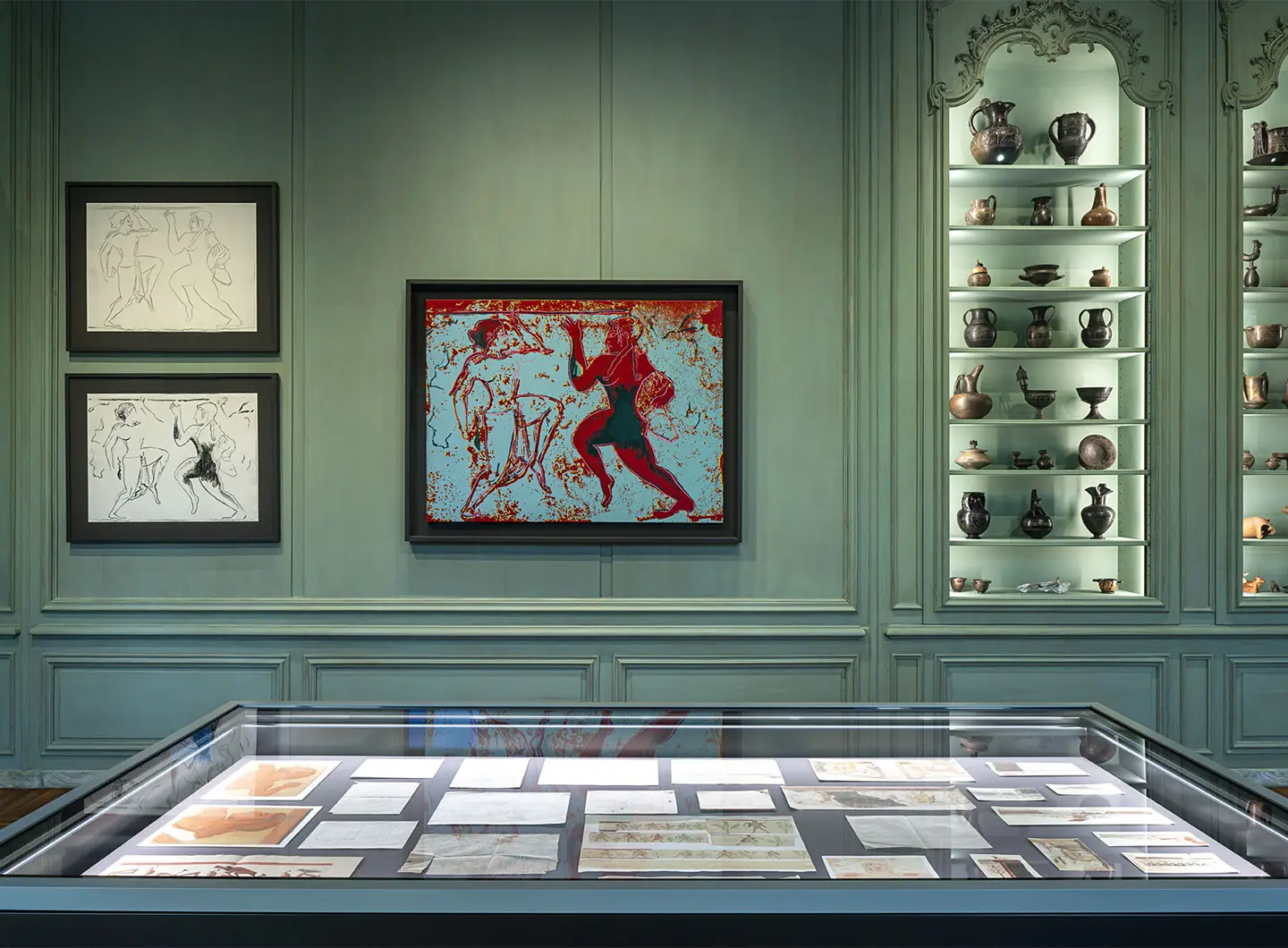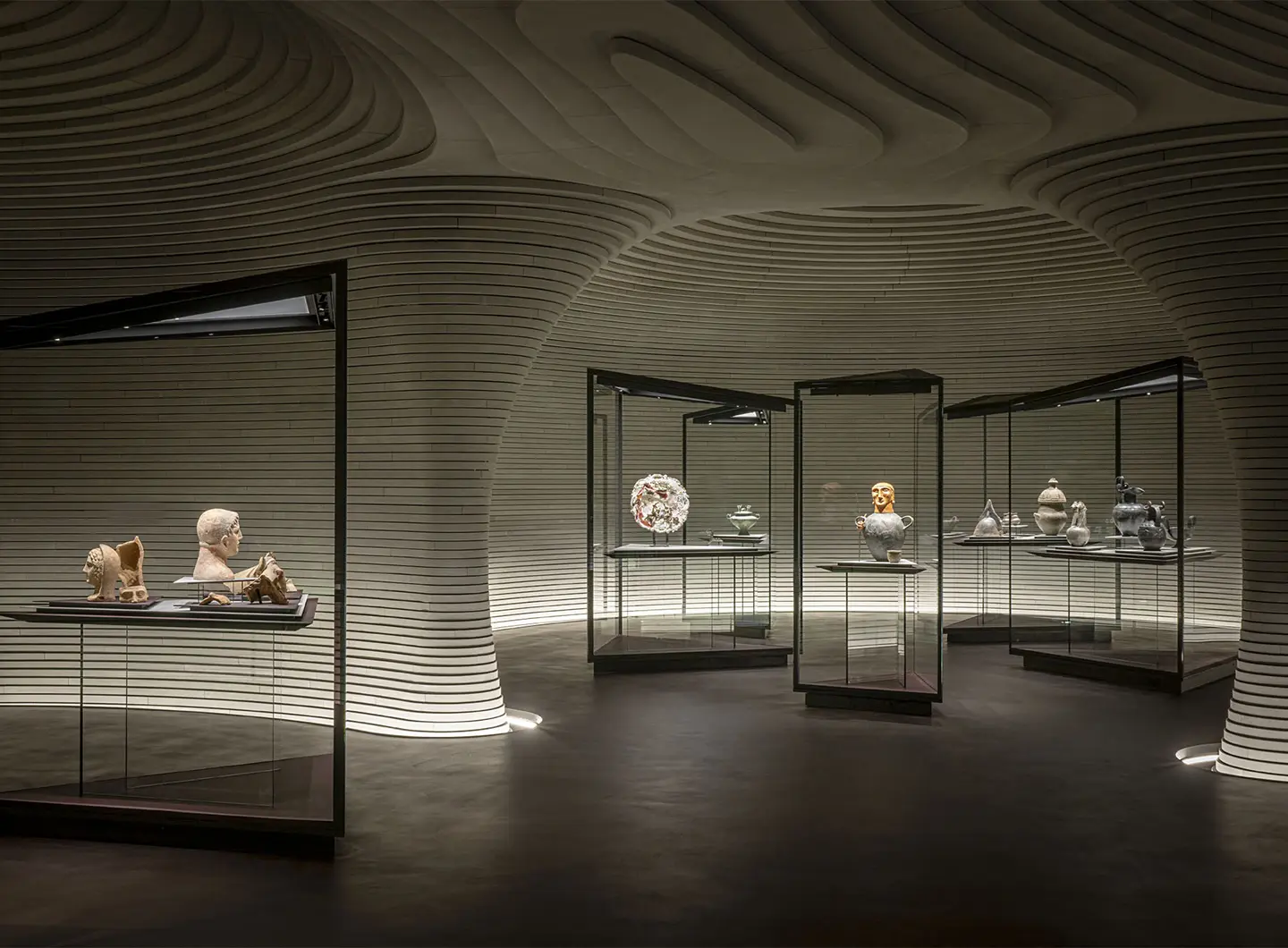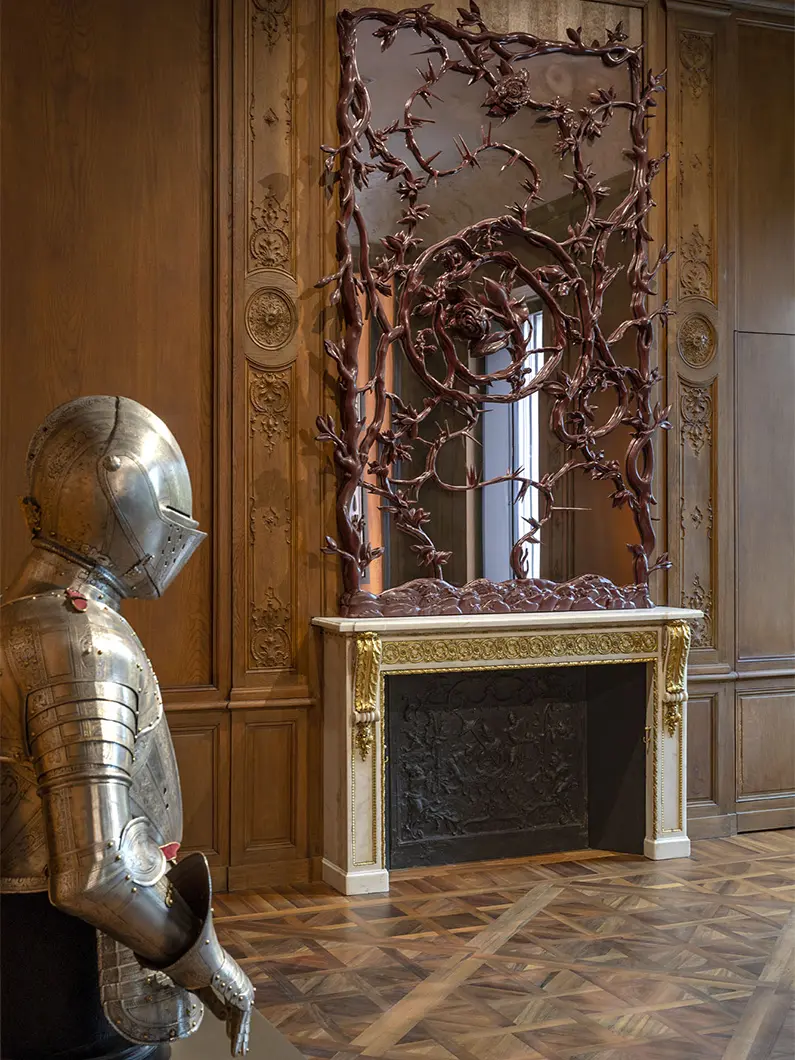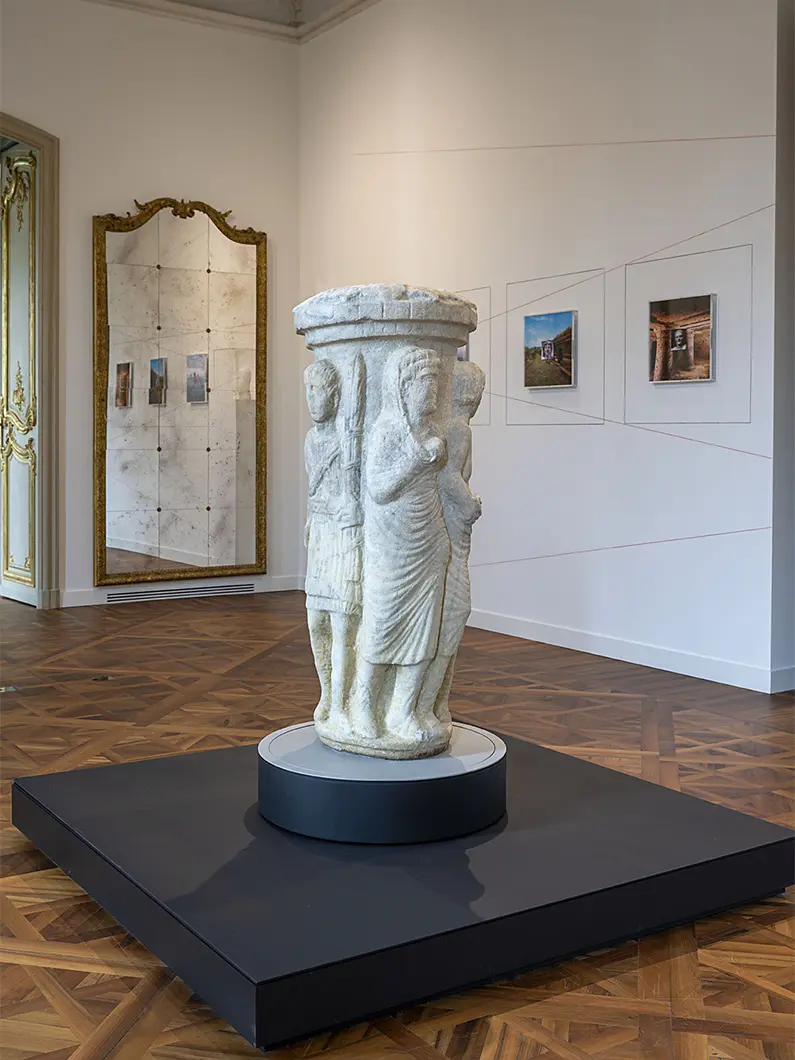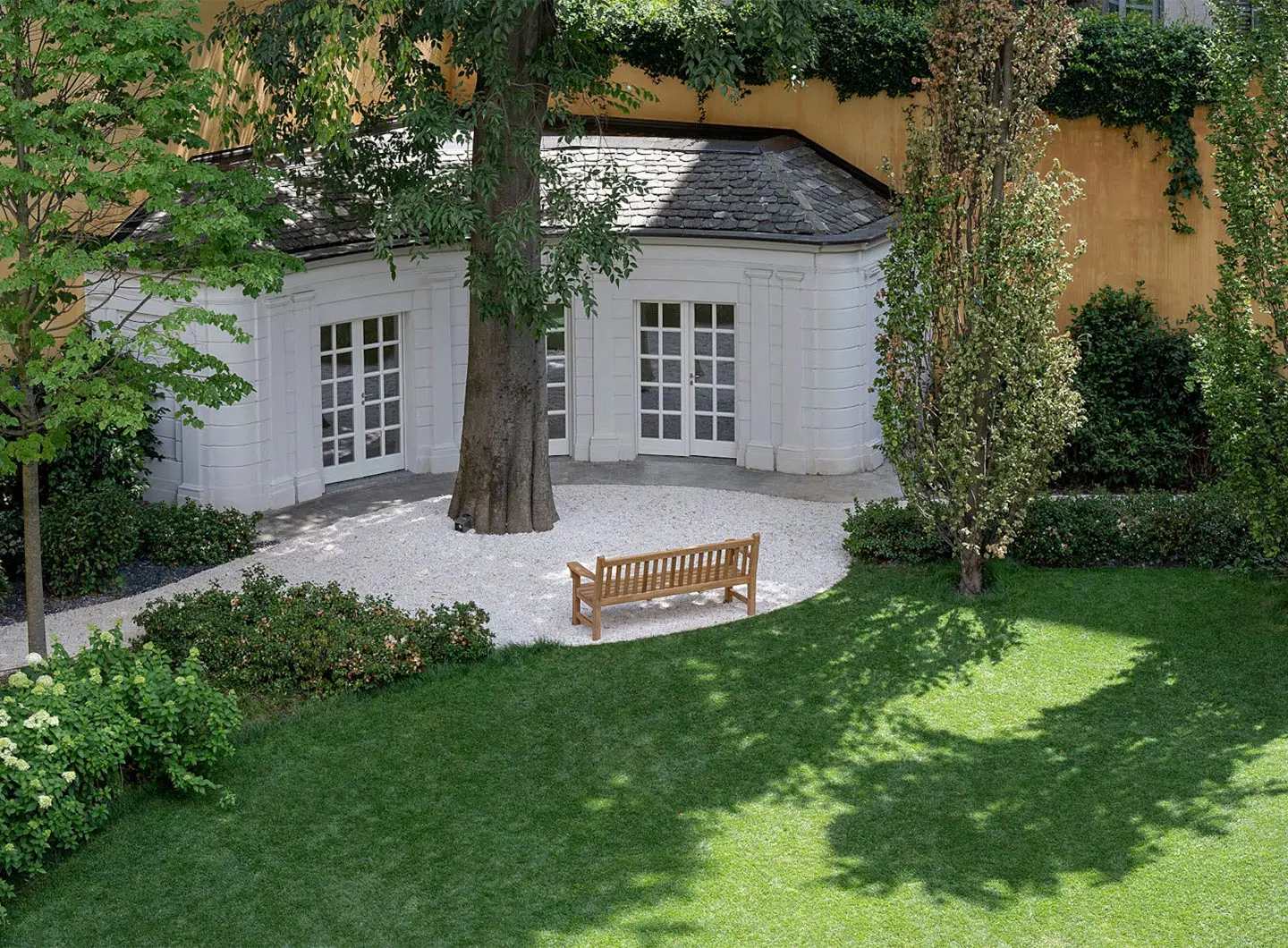From BIG to David Chipperfield, Frank Gehry to Snøhetta: a world tour of the best buildings set to open in 2026
A journey through time: the Fondazione Rovati Art Museum opens

Art Museum, Fondazione Luigi Rovati, photo Giovanni De Sandre
Designed by the architect Mario Cucinella, the Museum is home to a unique collection of Etruscan findings in open dialogue with contemporary works of art, from Fontana to Warhol
Discussing his upcoming projects a few months ago, the architect Mario Cucinella said: “Once you see the Art Museum, you’ll understand why it took 5 years to complete.” Only now that I’ve actually been there, do I understand what he meant - now that the keenly-awaited Art Museum inside the historic Palazzo Bocconi-Rizzoli-Carraro, in Milan’s Corso Venezia 52, has opened to the public. It is the last strand of the project for the new headquarters of the Luigi Rovati Foundation, in addition to the entrance hall and the garden complete with pavilion, the ticket office and the bookshop, the conference rooms and studio and the offices (all already finished), as well as the bistro cafe and the restaurant run by the chef Andrea Aprea, both designed by Flaviano Capriotti Architetti.
In 2015, MCA - Mario Cucinella Architects was commissioned by the Luigi Rovati Foundation to renovate the palazzo and enlarge and annex further areas for use as a museum, along with designing the interiors, the displays and the general artistic direction.
A historic Milanese palazzo fallen into disuse, next to symbolic Milanese edifices such as Piero Portaluppi’s Natural History Museum and the Planetarium, has thus been given back to the city thanks to a lengthy, complex architectural upgrading project that has become a model of cultural infrastructure for the Rovati Foundation, a place for ideas, experimentation and sharing.
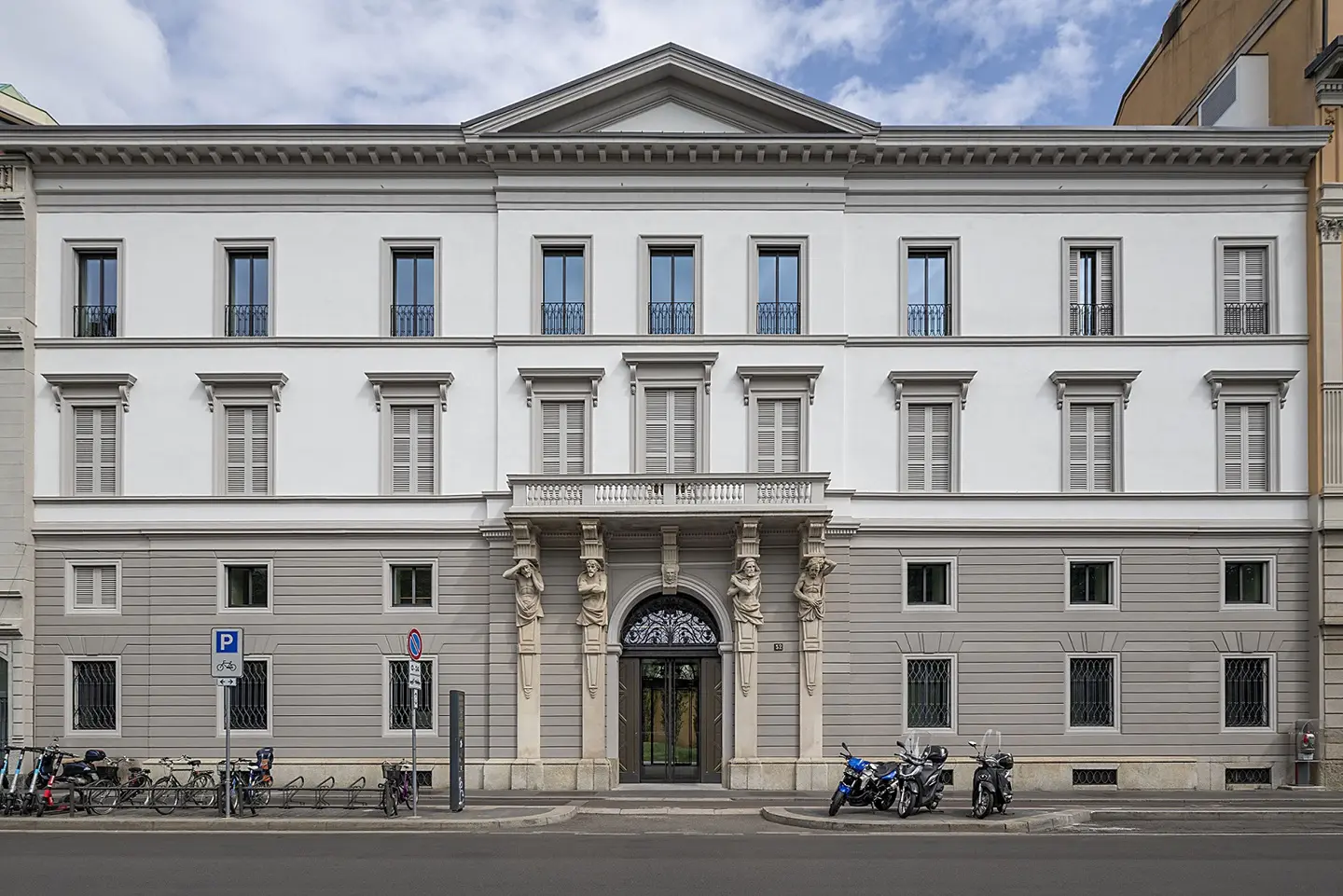
Fondazione Luigi Rovati, photo Giovanni De Sandre
Within the framework of this noble palazzo dating back to 1871, a single 3,000 m2 building now extends over seven floors, two of which are underground, all redolent of history. The architectural interventions primarily concerned the activities preparatory to the excavations leading up to the construction of the two new underground floors, with an underground museum - the most striking and characterful elements of which are the pietra serena covered cupolas – destined to house the Foundation’s Etruscan collection, the original nucleus of the project, which will also feature “contaminations” between the archaeology of this particular civilisation and works from other eras and cultures. Even today, alongside findings such as the Head of Achelous (5-6th century B.C.), we find a sculpture of the Head of Medusa by Arturo Martini (1930); while jostling alongside votive offerings, funeral urns, vases and small Etruscan bronzes are contemporary works by William Kentridge, Lucio Fontana, Arturo Martini and Picasso.
The underground space, lined entirely with stone laid horizontally on stratified levels and characterised by sinusoidal shapes that create continuity between the areas, is accessed through the main entrance to the palazzo. A staircase carved out of pietra serena, a material extracted from Tuscan-Emilian quarries, leads to the exhibition space, made up of three circular and one elliptical room. This dimly-lit space, with its sacred and meditative feel, is clad in 30,000 stone ashlar blocks, designed one by one and carved and mounted, making for a fluid, enchanting space. The decision to use a single stone, pietra serena, represents the story of a material extracted from the deep Firenzuola quarries, giving the feel of a space carved within the quarries themselves.
From warriors to our relationship with nature, from beauty to encounters with the Gods, the exhibition takes us on a journey through art and architecture, form and matter, city and civilisation. “Just because it’s an underground museum doesn’t mean it has to be a necropolis. On entering, one finds oneself immersed in a sort of city, because the Etruscans practised real methods of urbanisation: the concept of the city as we know it today was invented by the Etruscans, and then inherited and reworked by the Romans,” said Giovanna Forlanelli, President of the Foundation.
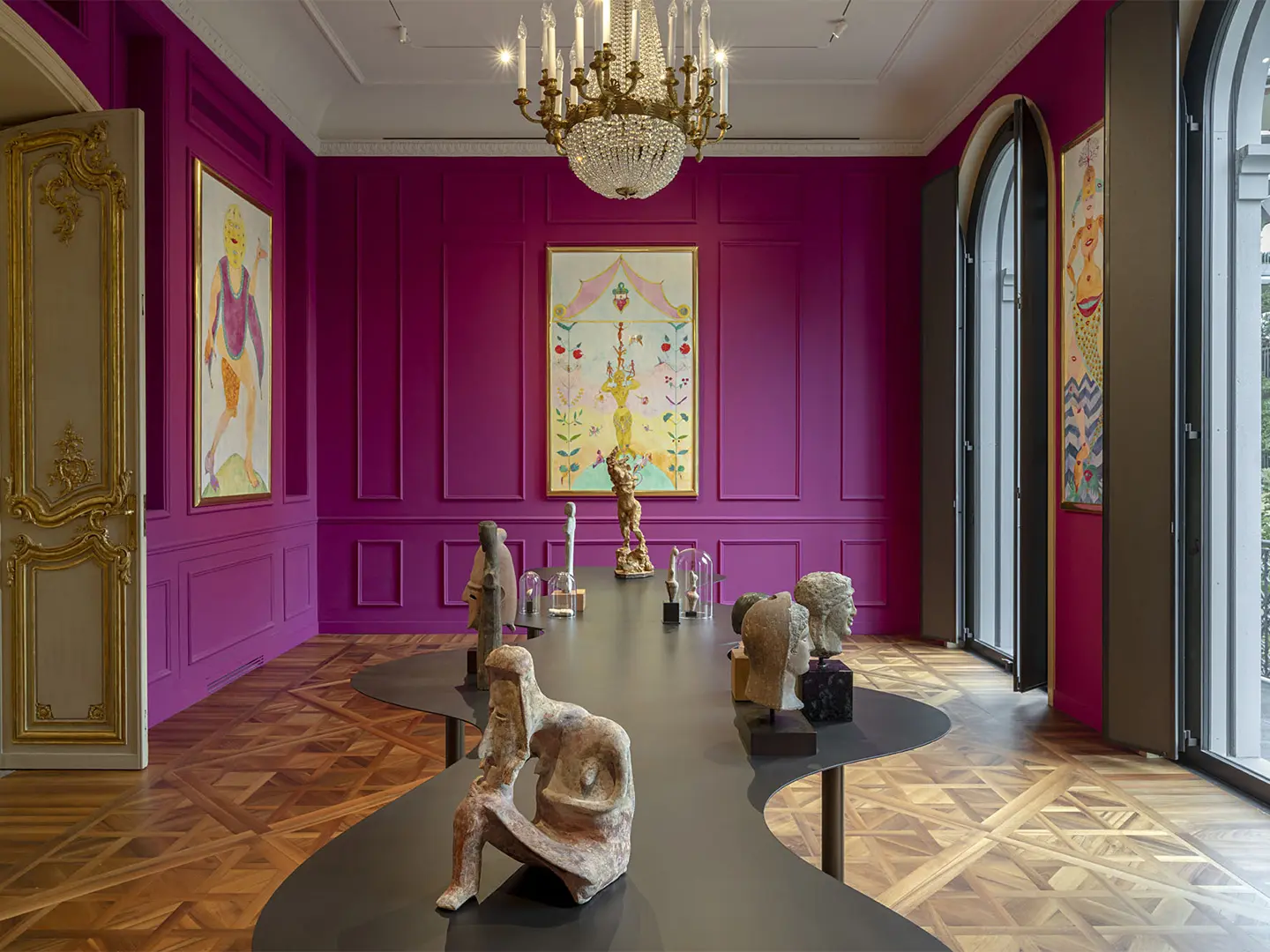
Sala Ontani, Art Museum, Fondazione Luigi Rovati, photo Giovanni De Sandre
Visitors then move from the underground floor to the piano nobile of the Palazzo – where the existing boiseries and furnishings were restored and repositioned – distinguished by its gilded doors, marble fireplaces and 18th century mirrors. Here too the narrative dialogue, in contrast or in contiguity with the ancient and the contemporary, is expressed through works such as Andy Warhol’s canvas The Etruscan Scene: Female Ritual Dance, or the Polaroids making up Paolo Gioli’s Etruschi series (1984), which dovetail seamlessly with the serial nature of the Etruscan Bucchero Ware inside the display cases. In the other rooms, works by contemporary artists such as Luigi Ontani, Giulio Paolini, Francesco Simeti and Marianna Kennedy inhabit spaces filled with Etruscan remains.
From the very outset, great attention was paid to the issue of environmental and energy sustainability, both in terms of the plant and in terms of the choice of materials and general usage strategies. The building is currently undergoing LEED v4 New Construction & Major Renovation certification, at SILVER level. “The Luigi Rovati Foundation thus embraces, not least through the rehabilitation of a building, the fundamental concepts of sustainability, rehabilitation and awareness of energy and consumption issues, the reuse of materials, and the wellbeing of visitors, researchers and staff in particular. Architecture and art are forms of therapy, they resonate within us, creating emotions, imagination and memories.
It is a way of looking after people, and this attentiveness is the most genuine expression of sustainability,” said Mario Cucinella.


 Salone Selection
Salone Selection
